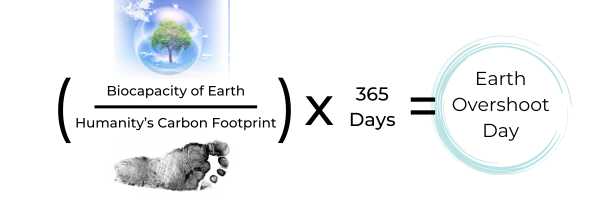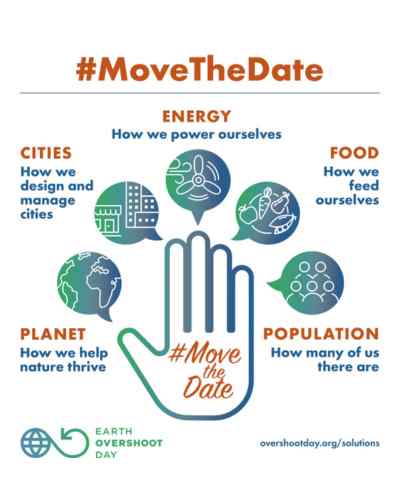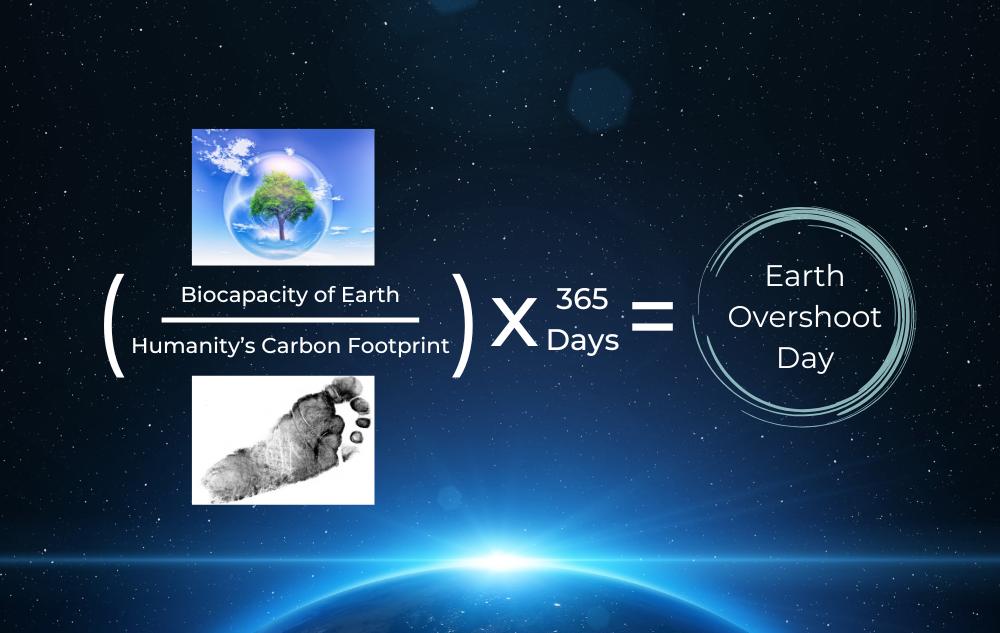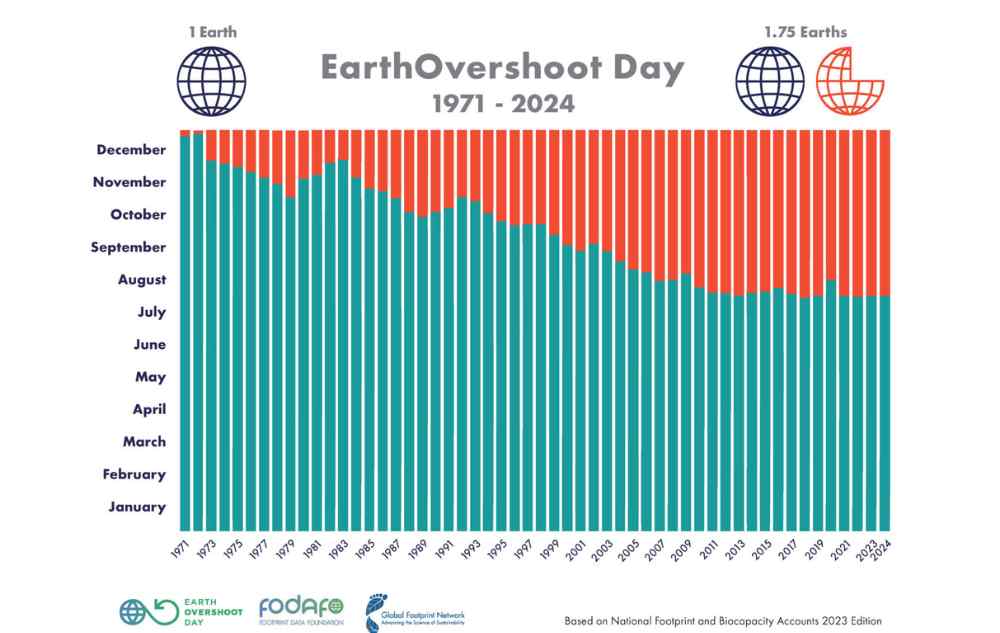The Truth About Our Ecological Footprint and Earth’s Biocapacity
Persistent Exhaustion of Earth’s Resources will Push the Planet to the Point of No Recovery.
Earth Overshoot Day is an estimation of the day in which humans exceed their ecological budget for the year. The emissions humans produce each year consistently exceed the amount of carbon Earth can absorb. This has led to a compounding deficit that is only worsening with time.
According to the Global Footprint Network: “We are well over budget, and that debt is compounding. It is an ecological debt, and the interest we are paying on that mounting debt—food shortages, soil erosion, and the build-up of CO₂ in our atmosphere—comes with devastating human and monetary costs.” It is only a matter of time before human behavior pushes our planet to the point of no recovery.
Earth Overshoot Day 2024 occurred on August 1st. This year’s Earth Overshoot Day is expected to be announced in June.
This article will explain the importance of Earth Overshoot Day and how humanity’s rapidly-increasing carbon footprint has affected the planet’s biocapacity. This article will also explore what needs to be done to change the course of Earth’s climate trajectory.
Earth Overshoot Day: The Day Humanity’s Demand Outpaces the Planet’s Supply
As human populations, industries, and technologies have grown over the years, so has our global carbon footprint. As the chart below demonstrates, humans are consistently and increasingly producing more carbon than the planet can absorb. “This means humanity is exhausting nature’s renewable resources in just over half a year, leaving us in an ecological deficit for the rest,” the World Economic Forum reports. The global carbon emissions produced in 2023 would require 1.7 planets to neutralize, which only deepens our carbon debt and further exacerbates our climate crisis.
Hope on the Horizon
Humans are exceeding Earth’s biocapacity each year. However, it’s important to note that the past twenty years of Overshoot Days have had a slower trajectory than in years prior. This is an encouraging sign that sustainability efforts are making a difference. That being said, there is still much to be done to reverse the existing deficit that continues to compound year after year.
Understanding National Ecological Deficits and Reserves
When the ecological footprint of a population exceeds the biocapacity of land available to that population, it creates an ecological deficit. A country’s deficit can be based on several factors. The Footprint Network specifies that if a region or nation has a deficit, “it means that the region is importing biocapacity through trade or liquidating regional ecological assets, or emitting wastes into a global commons such as the atmosphere.” Similarly, a region or country with a reserve has a higher biocapacity than its footprint.
In 2023, the United States had a national ecological deficit of -110%. Learn more with OPL’s Insights.
Looking for More?
Explore the National and Biocapacity Accounts’ interactive map, which depicts each nation’s ecological footprint and their deficit or reserve. Then hone in on a specific country or region with the Footprint Network’s Country Trends chart.
Learn about the health of our planet and human consumption’s effect on global biodiversity in the Global Footprint Network’s Living Planet Report.
How Earth Overshoot Day is Determined
To determine a given year’s Overshoot Day, Earth’s biocapacity is divided by humanity’s ecological footprint, the result of which is multiplied by 365 days. But to calculate this figure, we need to first understand how to determine our ecological footprint and Earth’s biocapacity.

Calculating Humanity’s Ecological Footprint
The global ecological footprint is an aggregate measure of the resource toll individuals, governments, and businesses exact on the environment. To calculate our global footprint, the amount of materials consumed by an individual (tonnes per year) is divided by the land required to produce the products and wastes that individual will consume (annual tonnes per hectare).
The individual’s footprint is then extrapolated using globally-recognized yield and equivalence factors to calculate a nation’s or a continent’s footprint. Our carbon footprint is measured in global hectares, which is a universal unit used to represent a biologically productive area.
Calculating Earth’s Biocapacity
Earth’s annual biocapacity is its ability to generate that which is demanded by humanity over the course of one year. This includes all materials harvested from the Earth as well as all wastes humans have produced that take up space. Biocapacity can fluctuate based on demand, land management, climate changes, and other factors.
To calculate Earth’s biocapacity, total land area is multiplied by yield and equivalence factors. Yield factors, which can fluctuate by country and by year, indicate the calculated productivity scale of each country’s farmland, forests, grazing pastures, and oceans. Equivalence factors refer to the conversion of productive land to global hectares; these values are the same for all countries in a given year. Biocapacity, like humanity’s ecological footprint, is also measured in global hectares.

How Humanity Can #MoveTheDate
Since the introduction of Earth Overshoot Day, populations across the globe have been working to minimize their carbon impact. The #MoveTheDate campaign encourages sustainability habits by focusing on five key change areas: planet, cities, energy, food, and production. By championing initiatives such as solar energy, sustainable fashion, widespread composting, animal husbandry, and others, humanity can fight our current trajectory and lessen our global ecological deficit.
The Global Footprint Network estimates that “increasing global low-carbon electricity sources from 39% to 75% would move it by 26 days, halving food waste would gain 13 days, and tree intercropping would earn an extra 2.1 days.” Delaying future Earth Overshoot Days is critical to reaching the target set by the United Nations Intergovernmental Panel on Climate Change (IPCC). IPCC demands that we reduce global emissions by 43% by 2030. To reach the IPCC’s goal, Earth Overshoot Day must move backwards by 19 days annually for the next six years.
Learn more about the many ways we can #MoveTheDate with the Power of Possibility platform.
Have you downloaded the One Planet Life app yet? Our app works like a sustainability fitness tracker, allowing you to create more sustainable habits through small, incremental changes. Select one of our six sustainable journeys, choose the Joyful Changes that best fit your lifestyle, and start tracking your progress today!
One Planet Life remains stubbornly optimistic that our choices, no matter how small, make a difference. First, make a personal commitment to live more sustainably. Then, explore how your community is reducing their carbon output and get involved in efforts near you. Together, we can #MoveTheDate and save our planet.













